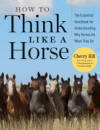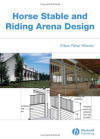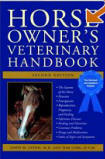|
Equine Kingdom Riding Academy
is no longer in operation. These more than 2,000 unique pages are provided for historical and educational reference. |
||
|
|
||
- Comtois - |
|||
|
This ancient breed is thought to have existed in the French-Comte region of France as early as the fourth century, when they were mentioned by Publius Vegese. They probably originated from German horses imported by the Burgundians, and it seems that their appearance has not altered dramatically over the years. During the 16th century, they were used to improve the Burgundy Horse, and were themselves improved during the 19th century by Norman, Percheron and Boulonnais blood. More recently there have been infusions of Ardennes blood into the breed, which has greatly improved their strength and soundness. They are versatile horses, and were favored by the military in France. They were used by Louis XIV for both the cavalry and the artillery, and in Russia during Napoleon's attacks. They are suitable for draft, farm, and riding, and are surefooted and tough. They are a mountain type, and are now bred widely in the mountainous areas of the Alps, Pyrenees, and Massif Central. They are ideally suited to the climate and environment of mountain work. However, they are also used for work in the forests and, interestingly, for working in the vineyards. In appearance, they tend to have cobby characteristics with a large head, a straight profile, and small, alert ears. The neck should be very muscular and is often quite short. They are broad and deep through the chest, with a rounded ribcage, short, strong legs, and powerful hindquarters. The legs have good strong joints and hard hooves, and are generally quite clean, with minimal feathering. Occasionally they will have the conformational defect of sickly hocks. They have a distinctive, often very dark, chestnut coloring, and a lighter mane and tail, and generally stand at under 15 hh. They are still used in France, for working in steep and rough areas, and are also, sadly, bred for the meat industry. The breed remains fairly prolific and has not become dramatically reduced in numbers as many draft breeds have since the use of motorized machinery. In part, the meat trade of France strangely helps to maintain the heavy horse breed numbers although horses being bred solely for the meat industry tend to suffer a deterioration in characteristics, as the emphasis is placed on producing bulk and meat.
|
|||
|



